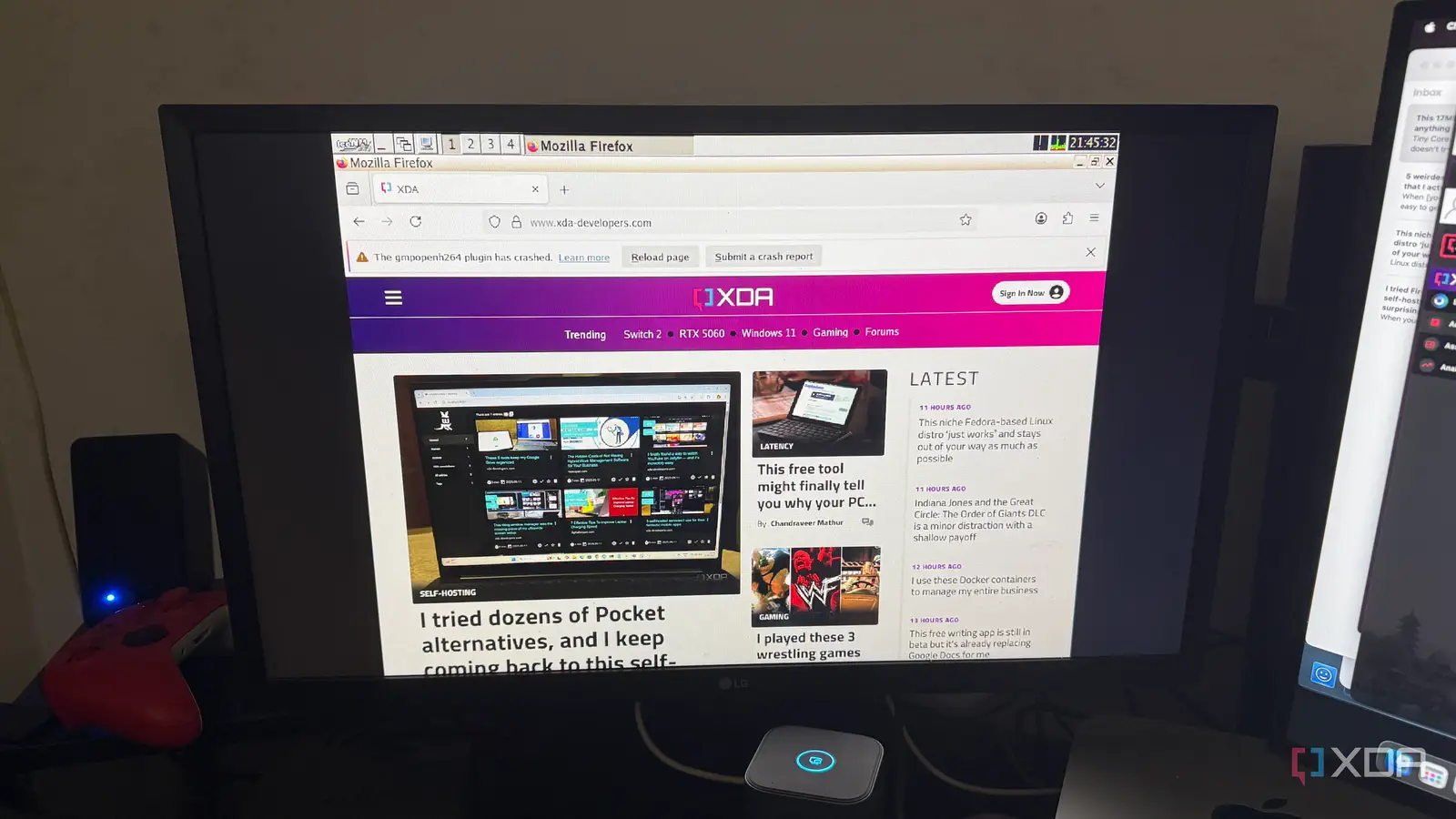
Tiny Core Linux is a distribution that doesn’t try to compete with the giants. Instead, it carves out a unique niche by being incredibly small, incredibly fast, and surprisingly capable for its size. At just 16MB, it’s a fraction of the size of most Linux distros, yet it still provides a working desktop environment. That alone makes it an intriguing project, but what really stands out is how it challenges the assumption that modern systems need to be large and complex.
Tiny Core Linux proves that size isn’t everything when it comes to operating systems.
This distribution isn’t about catering to beginners or offering every feature out of the box. It’s about modularity and control, letting you decide exactly what belongs on your system. That philosophy makes it useful for older hardware, embedded projects, or anyone who simply enjoys tinkering. Tiny Core Linux is proof that minimalism can be powerful, and it offers a refreshing alternative to the bloat that has crept into much of today’s software.
Why Tiny Core Linux is so unique among distributions
A micro-sized OS with surprising capabilities
Tiny Core Linux is one of the smallest desktop operating systems available today, with the smallest TinyCore ISO weighing in at just 17MB. That size is hard to believe when you first hear it, but the project has been actively developed and refined to squeeze in as much functionality as possible. The system boots quickly, often in just a few seconds, and runs on nearly any hardware you can throw at it. That includes machines that would choke on even the most lightweight mainstream Linux distributions.
The secret lies in how Tiny Core approaches system design. Instead of shipping with a large set of preinstalled applications, it provides only the essentials to get you up and running. From there, you add extensions for the software you need, keeping the system lean and tightly focused. This modular philosophy gives users the freedom to build exactly what they want, without carrying unnecessary baggage. It’s a design that rewards tinkerers and people who enjoy fine-tuning their setups.
There is a trade-off for such extreme efficiency. Tiny Core is not designed for beginners who expect everything to work out of the box. You’ll need to know a little about Linux to make the most of it, especially when configuring persistence and extensions. Still, for those who value control and minimalism, it’s one of the most rewarding environments to explore. The fact that it still receives regular updates and remains community-supported shows how resilient this approach has been over the years.
The three flavors of Tiny Core, many desktop options
Core, TinyCore, and CorePlus explained
Tiny Core Linux comes in three distinct versions, each aimed at a slightly different use case. The smallest is simply called Core, and at just 11MB, it boots into a command-line-only environment. It’s meant for advanced users who want to build everything themselves, whether that’s for servers, containers, or embedded systems. It may not look like much, but it’s extremely capable in the right hands.
The most well-known release is TinyCore itself, the 17MB version that includes a lightweight graphical desktop. This provides a balance between usability and minimalism, giving you a graphical interface without bloating the system. For users who want to get a system running quickly while still enjoying the Tiny Core philosophy, this is usually the best option. The included desktop environment is sparse, but it does the job without consuming resources.
Finally, there’s CorePlus, which is significantly larger at 106MB. Even at that size, it’s a fraction of the download of a traditional Linux distribution. CorePlus includes extra drivers, tools, and an installer that make it easier to configure wireless networking or install the system on a hard drive. It’s often the edition new users start with, since it simplifies some of the setup work while keeping the overall footprint low. Having these three choices makes Tiny Core adaptable to a wide range of situations.
How to get started with Tiny Core Linux
Installing Tiny Core Linux step by step is simple and straightforward
One of the appealing things about Tiny Core is how quickly you can try it out. Downloading the ISO from the official site takes just a few seconds because of its size. Once you have it, you can write it to a USB stick using a tool like Rufus on Windows or Balena Etcher on Linux and macOS. It also runs beautifully in a virtual machine, making it easy to experiment without affecting your central system.
Booting Tiny Core for the first time is a lesson in simplicity. Depending on which version you choose, you’ll either see a command line or a very barebones graphical desktop. From there, the main task is expanding the system with extensions. Tiny Core utilizes its own package manager, called “tce,” which allows you to install applications such as browsers, file managers, and text editors. It’s fast, but you’ll notice right away that nothing is included unless you explicitly install it.
By default, extensions don’t persist across reboots, which can confuse newcomers. To keep your setup consistent, you’ll need to configure persistence so your extensions and settings survive restarts. That extra step might feel unusual compared to other distributions, but it reinforces the project’s design goals of modularity and efficiency. Once persistence is in place, you can gradually build a system tailored to your needs. Here’s the basic process:
Download the ISO for Core, TinyCore, or CorePlus from tinycorelinux.net.
Write the ISO to a USB stick or CD.
Boot your system from that media.
Use the package manager to add the software you want.
Set up persistence if you need your environment to survive reboots.
The Tiny Core installation image doesn’t always play nicely with UEFI-based PCs, especially if you’re attempting to install from a USB stick. You can boot your PC inlegacy BIOS mode, or use a tool like Ventoy to create a bootable USB stick for installation.
What makes Tiny Core Linux worth using
Why enthusiasts keep coming back to it
Tiny Core Linux is often described as a tool for people who like to build things. Rather than being a ready-made desktop environment, it provides the raw materials for you to assemble your own. That makes it incredibly appealing for enthusiasts who enjoy creating a system that is precisely what they need, nothing more and nothing less. It’s a refreshing alternative to the bloated installs that dominate modern computing.
For people with older hardware, Tiny Core can breathe new life into machines thought to be long obsolete. Systems with as little as 64MB of RAM can still boot and run smoothly. That’s not just a party trick — it means you can extend the lifespan of old laptops, desktops, or even netbooks that otherwise would be collecting dust. The environmental benefit of keeping hardware functional a little longer shouldn’t be overlooked.
Developers and experimenters also value Tiny Core for its speed. Boot times are almost instantaneous, and spinning up a VM with it is faster than nearly any other Linux distro. That makes it perfect for quick tests, throwaway environments, or embedded projects where every megabyte of storage is precious. While it won’t replace a full desktop OS for everyone, its flexibility ensures it has a dedicated place in the Linux world.
A tiny system with considerable potential
Tiny Core Linux proves that size isn’t everything when it comes to operating systems. By taking a modular approach and stripping down to the essentials, it manages to remain relevant in a computing landscape that often prioritizes flash over efficiency. It runs where other systems cannot, offering both a challenge and an opportunity for those willing to learn its quirks. If you want a distro that’s fast, adaptable, and endlessly customizable, this 16MB wonder deserves a spot on your USB stick.



